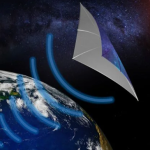The Inflation Reduction Act offers substantial federal tax credits to U.S. households for energy-efficient home upgrades. Eligible improvements include insulation, new HVAC systems, electric heat pumps, and renewable energy installations like solar or geothermal. Over 2.3 million families have already saved more than $2 billion—an average of $880 per household.
Claiming these tax credits can be complex, requiring receipts and proper documentation. To simplify the process, the U.S. Department of Energy (DOE) has launched new tools to help homeowners and contractors understand how to qualify and apply.
Explore the three key resources: the Tax Credit Product Lookup Tool, a home insulation guide, and a contractor training module.
Tax Credit Product Lookup Tool
Eligible through 2032, the Energy Efficient Home Improvement Credit offers up to $3,200 annually in federal tax credits for qualifying upgrades. These improvements not only lower upfront costs but also reduce long-term utility bills.
The new Tax Credit Product Lookup Tool makes it easy to find out if your heating, cooling, or water heating equipment qualifies. Enter a model number to receive a one-page eligibility report—perfect for your records during tax season.
You can also combine these credits with DOE rebate programs and local or utility incentives to maximize savings. For product-specific details, visit the ENERGY STAR® website.
Read More: New Homes Trending Cheaper Than Existing Ones: Will the Gap Close Further?
Home Insulation Explained

Insulating your home boosts comfort, cuts energy use, lowers utility bills, and shrinks your carbon footprint—year-round.
Every home has a thermal envelope: the floors, roof, walls, foundation, windows, and doors. Gaps around ducts, vents, and pipes let air escape, making your home drafty and energy bills spike. Proper insulation and air-sealing—like caulking and weatherstripping—prevent heat loss, improve comfort, and support a healthier indoor environment.
Many insulation and air-sealing products qualify for a federal tax credit, but eligibility depends on your climate zone. Start by finding your zone, then use the Home Insulation Explainer Tool to identify which upgrades qualify. Once you know what products are eligible, explore the best options for your home and start saving.
Contractor Training Module

This new training module helps contractors understand how to take advantage of residential energy efficiency incentives, including those for home electrification. It covers programs at the federal, state, local, and utility levels.
A free 30-minute video guides contractors to certification and training programs that build the skills needed for clean energy jobs. Before starting your project, share this tool with your contractor to ensure they’re prepared and qualified.
Frequently Asked Questions
What types of home improvements qualify for federal tax credits?
Eligible upgrades include insulation, energy-efficient windows and doors, HVAC systems, heat pumps, water heaters, and renewable energy systems like solar panels and geothermal.
How much can I claim in tax credits for home improvements?
You may qualify for up to $3,200 per year in tax credits through the Energy Efficient Home Improvement Credit. Separate credits apply for renewable energy installations.
Do I need to live in the home to claim the credit?
Yes, generally the improvements must be made to your primary residence. Some exceptions may apply for second homes with renewable energy upgrades.
How do I know if a product qualifies?
Use the Tax Credit Product Lookup Tool or check ENERGY STAR® labels to confirm eligibility. Be sure to save model numbers and receipts.
What documentation do I need to claim the credit?
Keep detailed records, including receipts, manufacturer certifications, and product specifications. You’ll need this information when filing IRS Form 5695.
Can I combine federal tax credits with state or utility rebates?
Yes, federal credits often stack with state programs and local utility rebates, which can significantly increase your total savings.
Are labor and installation costs included?
Labor may be covered for certain improvements, like HVAC systems and heat pumps. Materials-only improvements (like insulation) typically exclude labor.
Conclusion
Upgrading your home with energy-efficient improvements isn’t just smart for the environment—it’s a powerful way to reduce utility bills and take advantage of valuable federal tax credits. From insulation and air sealing to high-efficiency HVAC systems and renewable energy installations, there are many ways to save.











